As a dog owner, I often think about how to secure dog in car with leash effectively. It’s surprising that around 84 million dogs travel in vehicles annually, often unrestrained. This poses serious safety risks for everyone in the car. Understand the reasons behind your dog’s panting during car rides in our article Why Does My Dog Pant in the Car?
I’ve found that a sturdy leash and a good harness are essential. Research shows unrestrained dogs can increase car accident risks by 50%. With the right approach, we can keep our furry friends safe while enjoying our journeys together
Navigation Menu
Quick Look
To secure a dog in a car with a leash, first, attach a sturdy harness to your dog instead of a collar for added safety. Then, use a non-retractable leash and connect it to the seat belt or a secure anchor point in the vehicle. This setup keeps your dog safe and prevents distractions while driving.
What are the signs that my dog is uncomfortable in the car?
Several signs indicate your dog may be uncomfortable in the car. Look for excessive panting or drooling, which can suggest anxiety or stress. If your dog is whining, barking, or trying to escape the harness, these behaviors often signal distress.
Additionally, watch for restlessness, such as pacing or attempting to climb into your lap. Dogs may also display signs like flattened ears, yawning, or wide eyes, which indicate discomfort.
If your dog tries to hide or seems overly quiet, it might be best to take breaks during your journey or consider consulting a veterinarian for advice. Explore remedies for your dog’s travel discomfort by checking out What Can I Give My Dog for Car Sickness?.
Risks of Unrestrained Dogs in Vehicles
As a dog owner, I understand how important it is to keep my furry friend safe during car rides. However, many people underestimate the risks associated with unrestrained dogs in vehicles. Let’s explore the potential dangers that come with not securing your dog properly.
- Injury Risks: Unrestrained dogs can be thrown around during sudden stops or collisions, leading to severe injuries or even fatalities. A 60-pound dog can exert over 2,700 pounds of force in a crash at just 30 mph.
- Distraction Hazards: Dogs that roam freely can distract drivers, increasing the risk of accidents. Studies show that over 15% of car accidents involve distractions caused by pets.
- Legal Consequences: Many regions have laws requiring pet restraints in vehicles. For example, in California, failing to secure your dog can result in fines up to $1,000 if your pet distracts you while driving.
- Emotional Stress: An unrestrained dog can become anxious or stressed during travel, leading to erratic behavior. This can affect not only the dog but also the passengers in the car.
- Potential Escape: If a dog is not secured, they may jump out of the car during stops or accidents, increasing the risk of getting lost or injured. In fact, over 100,000 pets are lost each year due to accidents while traveling.
Choosing the Right Leash and Harness Combination
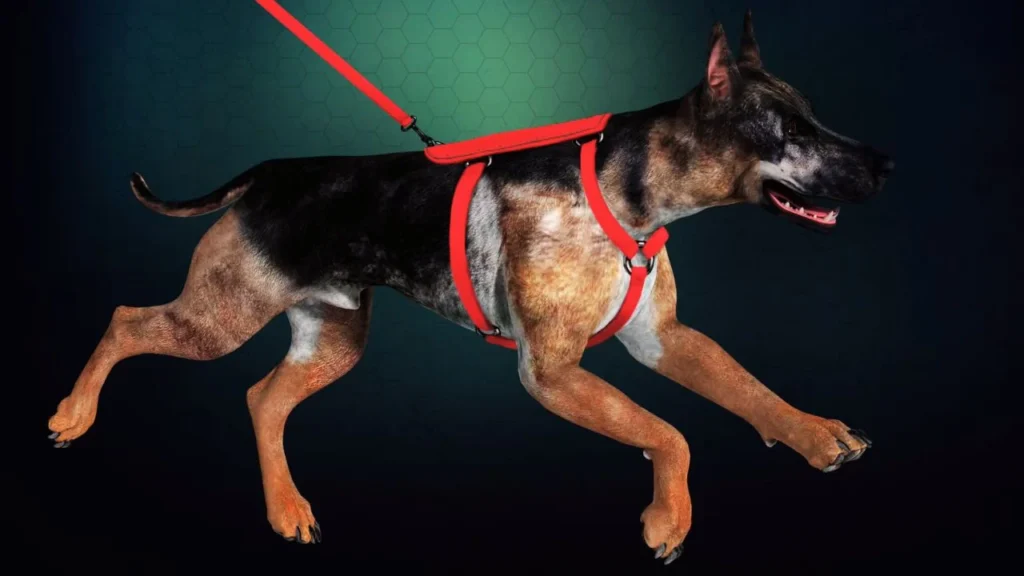
To keep your furry friend safe in the car, the right harness and leash combination is crucial. I always look for a harness that’s crash-tested and fits snugly, as this can significantly reduce the risk of injury during sudden stops. A well-fitted harness helps distribute pressure across the dog’s body, minimizing the chance of neck injuries, which can occur when using a standard collar.
Selecting the Right Leash
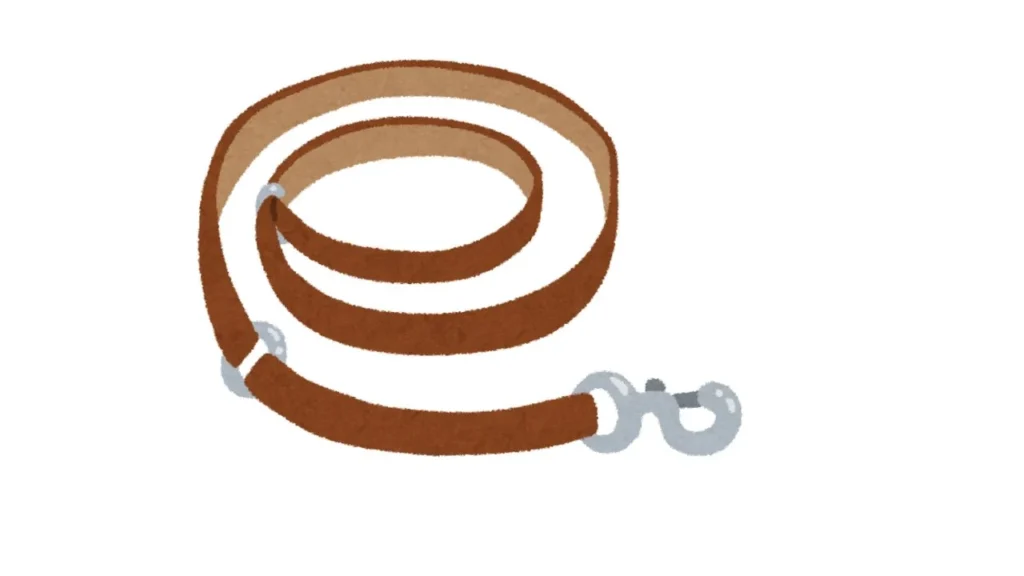
When selecting a leash, I recommend opting for a sturdy, non-retractable option. Retractable leashes can lead to sudden jerks if your dog pulls, which might catch you off guard. A good rule of thumb is to choose a leash that’s about six feet long, giving your dog enough freedom to sit or lie down comfortably while still remaining secure.
Avoiding Collars Alone
It’s essential to avoid attaching leashes to collars alone, especially during car rides. A harness provides better control and security, ensuring your dog is less likely to slip out. Investing in a reliable harness and leash combo is a small price to pay for your pet’s safety, especially since road accidents can happen in seconds.
How to Secure Dog in Car with Leash
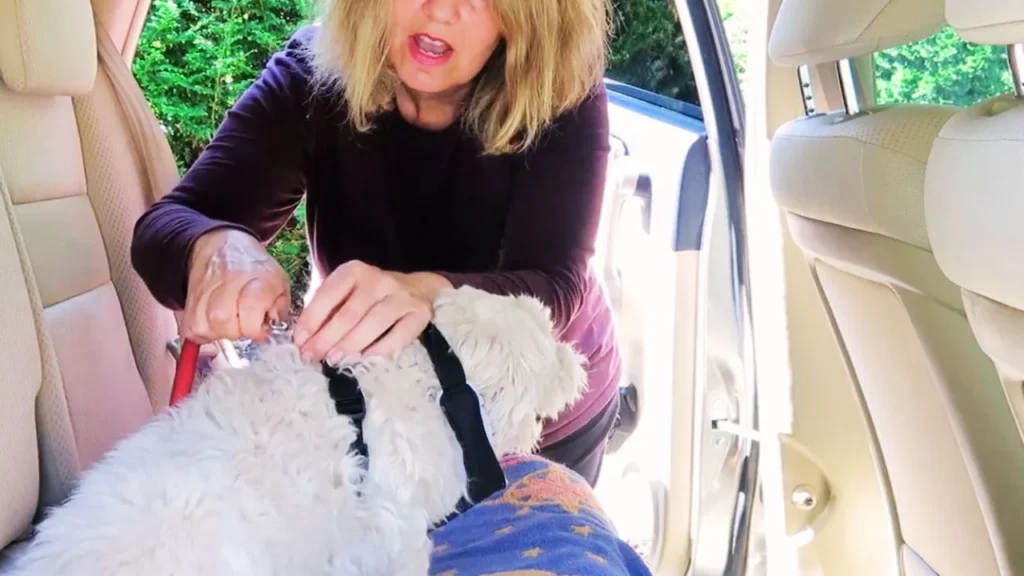
Securing my dog in the car is essential for safety and comfort. I’ve tried various methods to keep him safe during our travels, and I’m excited to share my favorites. Each of these techniques has proven effective, making every ride enjoyable for both of us.
Attaching Leash to Seat Belt
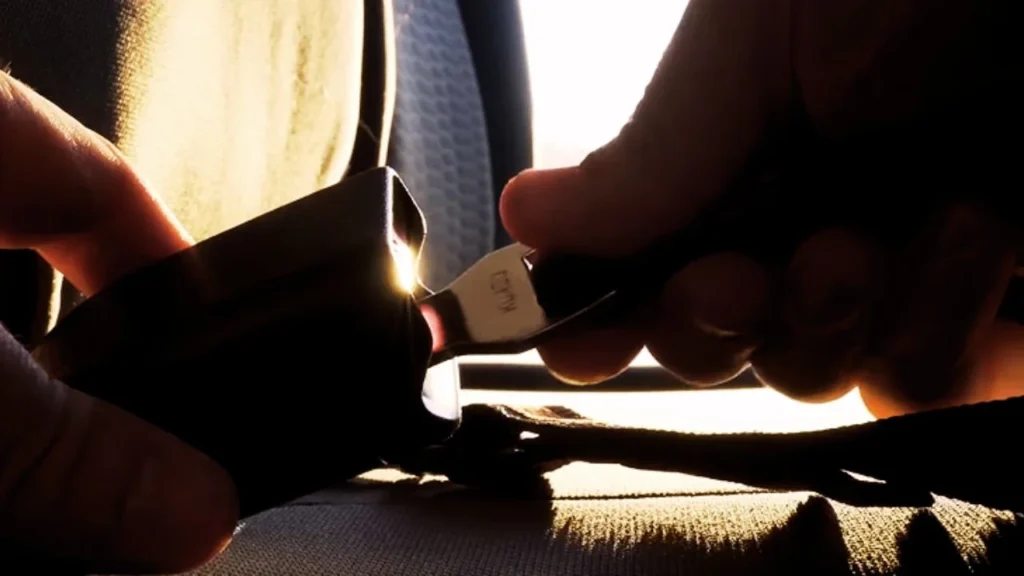
When it comes to securing my dog in the car, I’ve discovered several effective methods that really make a difference. First up, I love the idea of attaching the leash to the seat belt. It’s super simple—just use a sturdy leash with a carabiner clip to connect it to the seat belt buckle. This way, my pup stays secure without much fuss.
Using a Zip Line Restraint
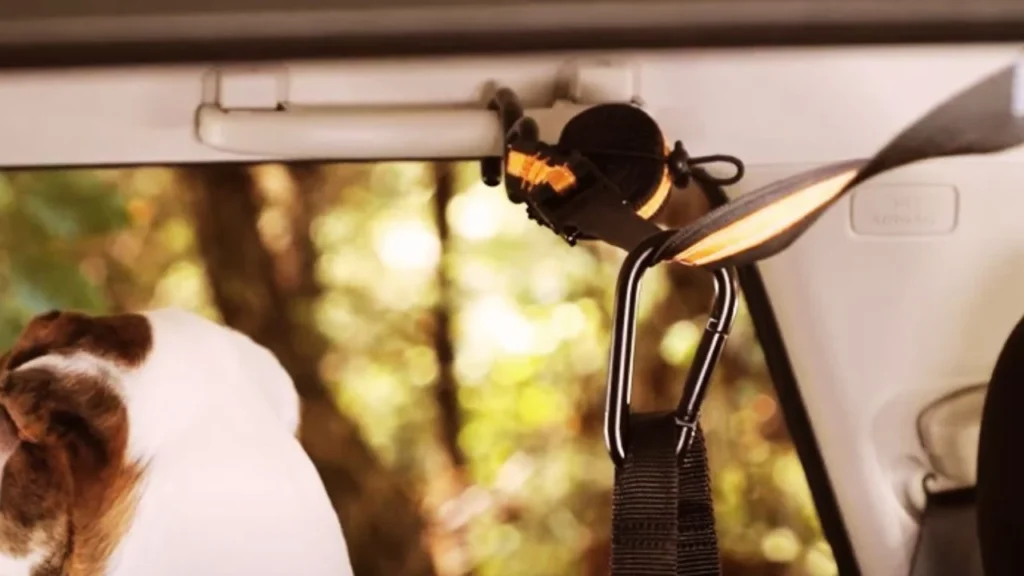
Another method I enjoy is using a zip line restraint. I install a zip line between the rear seat handles, which gives my dog some freedom to move without getting too wild. By attaching the leash to the zip line, I can limit how far he goes, ensuring he’s safe and comfortable during our rides.
Connecting Leash to Headrest
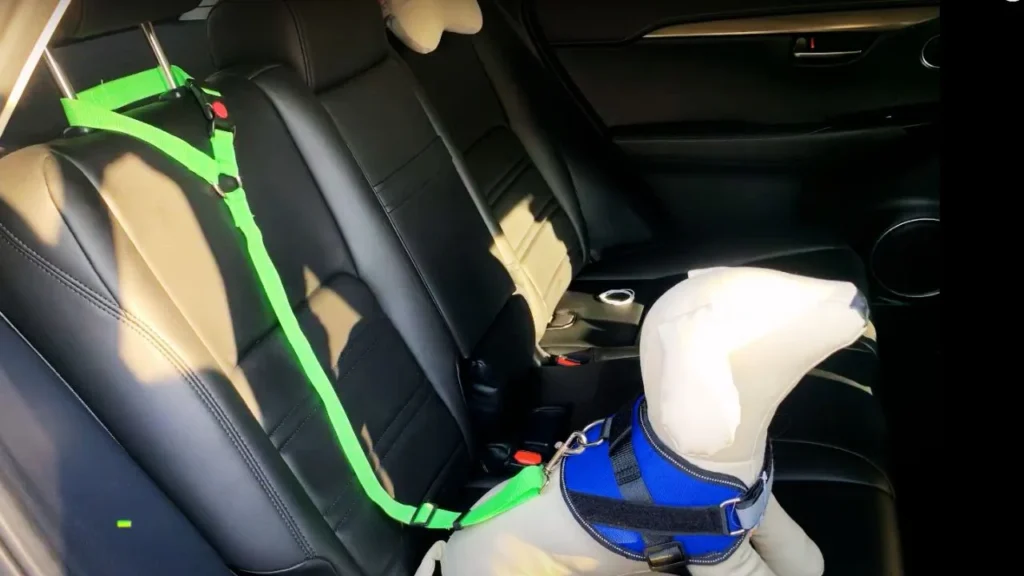
Connecting the leash to the headrest is another option I often utilize. I loop the leash around the headrest and then attach it to my dog’s harness. This method keeps him snug and secure, while also ensuring the leash is tight enough to prevent any unnecessary movement. It’s a quick setup that makes a huge difference.
Utilizing Vehicle Tie-Downs

If your vehicle has built-in tie-downs in the cargo area, take advantage of that feature. I simply attach the leash to these points to keep my dog secure. This method works well, especially for larger breeds, and it ensures they’re snug in place without feeling restricted. Learn about the safety implications of leaving your dog unattended in the vehicle with our insights in Is It OK to Lock a Dog in a Car?.
Safety Tips and Best Practices
When I travel with my dog, safety is always my top priority. Taking the time to implement a few best practices makes our car rides much more enjoyable. Here are some tips I follow to ensure a safe and comfortable journey for both of us:
- Regularly Check Gear: Inspect the leash and harness before each trip to ensure they’re in good condition.
- Prioritize Comfort: Ensure your dog has enough space to sit, stand, and lie down comfortably in the vehicle.
- Minimize Distractions: Bring toys and treats to keep your dog occupied and reduce potential distractions while driving.
- Be Prepared for Emergencies: Keep a well-stocked first aid kit in your vehicle, including essentials like antiseptic wipes and bandages.
- Practice Short Trips: Start with short car rides to help your dog adjust to being secured, reducing anxiety for longer journeys.
Alternatives to Leash Restraints
Crates: A Safe Haven for Your Dog
When I think about securing my dog in the car, I often consider alternatives to just using a leash. One of the safest options is a crate, which can be a cozy little haven for my furry friend. According to the American Kennel Club, dogs in secured crates are 70% less likely to be injured in an accident compared to unrestrained pets.
Dog Car Seats: Elevating Safety and Comfort
Dog car seats are another fantastic choice, especially for smaller breeds. These seats not only keep my pup secure but also elevate them, giving them a view out the window. Studies show that having an elevated seat can reduce motion sickness in dogs by about 40%.
Dog Seat Belt Harnesses: Easy and Effective
For those who prefer a harness without the fuss, dog seat belt harnesses can be a game-changer. These harnesses easily attach to the vehicle’s seat belt system, providing a snug fit. In fact, tests indicate that seat belt harnesses can reduce the risk of injury by nearly 50% in case of sudden stops.
Final Words
Understanding how to secure a dog in a car with a leash is vital for everyone’s safety. Studies show that unrestrained pets can become projectiles in an accident, potentially causing harm to themselves and passengers.
By using a sturdy harness and a proper leash setup, I ensure my dog travels safely and comfortably. This simple practice helps us enjoy our journeys together, knowing we’re both secure and protected on the road.
FAQs
Can I use a leash to secure my dog in the front seat of the car?
While you can technically use a leash to secure your dog in the front seat, it is not recommended. The front seat poses safety risks due to airbags, which can injure a dog in the event of an accident.
It’s safer to keep your dog in the back seat, secured with a harness and leash. This helps prevent distractions and keeps your pet safer, as they are less exposed to potential impact from the front. Discover effective methods to keep your vehicle fur-free in our article on How to Get Dog Hair Out of Car.
What adjustments should I make for small versus large dogs when securing them with a leash in the car?
For small dogs, ensure you use a lightweight harness and a shorter leash to prevent excessive movement. Consider a booster seat for added safety and visibility. For large dogs, opt for a robust, crash-tested harness and a longer leash, allowing some freedom without compromising control. Make sure the leash is securely attached to an anchor point, preventing the dog from moving around too much, which can be distracting while driving.

